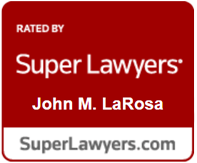How We Work
A. Employee Advocate Strategy Meeting (“E.A.SY. Meeting”).
- We sit down with you to fully understand your employment problem.
- Background Interview. We learn about you, the employer, and the current problem.
- Your Situation. You explain the timeline of events. So you will have a chance to be heard.
- Document Review. We thoroughly review your severance package or other employment documents to determine if there are “pitfalls” or “traps” in any papers that the employer wants you to sign.
- Overview of the Law. You will learn the “lay of the land” of Employment Law.
- Your Best Course of Action. You receive advice and recommendation(s) for your “path forward.”
- Your Decision. We will answer all of your questions and agree on a date for your decision.
- Pointing You in the Right Direction. Whether or not you retain us, you are given options.
B. Demand Letter. We persuasively explain both the facts and the governing law for your situation and then make a monetary demand to give the employer a chance to resolve the matter before litigation. So you will know quickly whether the employer is interested in discussing settlement up front.
C. Charge of Discrimination with a Federal or a State Administrative Agency.
We preserve your legal right to bring an employment case in court later, if necessary.
- Charge Filing. You will rest assured you took the right steps at the proper place in a timely fashion.
- Acknowledgment. You will get written confirmation that the employer is on notice of your Charge.
- Agency Mediation. You may have a chance for a mutually acceptable resolution to your case.
- Investigation. A government investigator will explore the employer’s negative actions against you, often through on-site interviews at the workplace or a Fact-Finding Conference with the parties.
- Rebuttal Letter. You will have the last word before the Investigator’s Determination.
- Determination (Probable Cause/No Cause). Agency assesses the case based on its evidence review.
- Probable Cause & Conciliation. Here, a settlement can be reached after a Probable Cause Finding.
- Right to Sue Letter. We earn for you your right to pursue a lawsuit in court either by requesting this letter at least 6 months after the Charge Filing or by obtaining a Determination.
D. Lawsuit in Court. Most discrimination claims can be pursued in court only after obtaining a Right to Sue Letter. Other employment claims can be filed in court immediately.
- Complaint. Your case will be described in extraordinary detail for our trial judge.
- Response to Complaint. The employer may file an Answer or a Motion to Dismiss.
- Written Discovery. We exchange written questions and document requests with the employer.
- Motion to Compel. A judge decides if the employer must produce evidence it withheld.
- Depositions. We take sworn testimony under oath previewing the witnesses’ trial testimony.
- Expert Discovery. You will know what the expert witnesses think the value of your case is.
- Summary Judgment. We persuasively present your case to our judge in a brief or an oral argument.
- Court Mediation. A separate judge or other mediator may encourage a negotiated settlement before trial.
- Pre-trial. You learn what evidence will go to the jury in the trial.
- Trial. If the case is not resolved by this point, you will have “your day in court.”
- Post-trial. We will file any needed post-trial motions on legal issues to be decided by our judge.
- Verdict and Judgment. You will have a resolution of your employment case in a court of law.
E. Appeal. Even if the case is dismissed, you may request a panel of multiple judges reverse that outcome.

